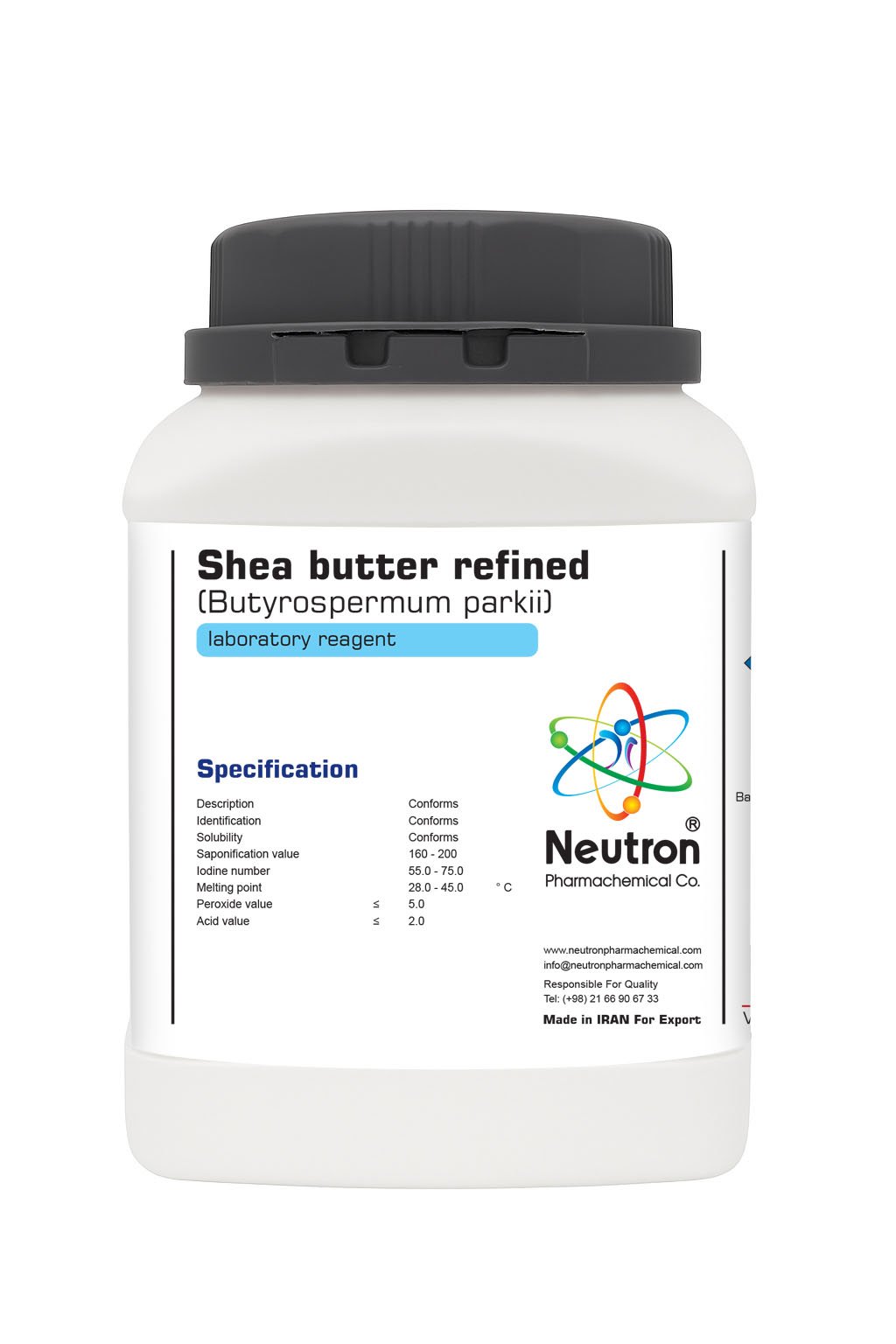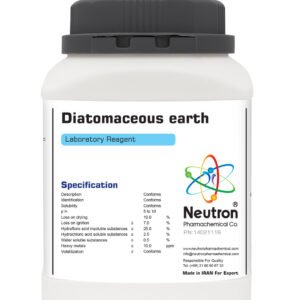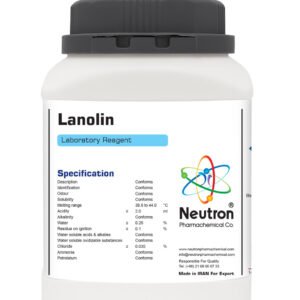شی باتر
| CAS number | 91080-23-8 |
| Description | Conforms | ||
| Identification | Conforms | ||
| Solubility | Conforms | ||
| Saponification value | 160 – 200 | ||
| Iodine number | 55.0 – 75.0 | ||
| Melting point | 28.0 – 45.0 | ° C | |
| Peroxide value | ≤ | 5.0 | |
| Acid value | ≤ | 2.0 |
Shea Butter is a natural fat extracted from the nuts of the African shea tree (Vitellaria paradoxa). It is widely used in pharmaceutical and laboratory applications as an emollient, moisturizer, and excipient.
🏭⚗️ Production
Shea butter is produced by roasting, grinding, and pressing shea nuts to extract the fat, which is then purified and filtered. The resulting product is a creamy, off-white to yellow solid suitable for pharmaceutical and cosmetic formulations.
🔬 Properties
Shea butter is a semi-solid, pale yellow to ivory fat with a mild nutty odor. It is insoluble in water but soluble in oils and organic solvents. It has a melting point of 31–38°C and acts as an emollient, stabilizer, and thickening agent. Chemically, it is stable and compatible with a wide range of pharmaceutical excipients.
🧪 Applications
In pharmaceutical formulations, shea butter is used as a base for ointments, creams, and suppositories, providing moisturizing and protective properties. In laboratory and cosmetic applications, it serves as an emollient, stabilizer, and carrier for active ingredients. Shea butter is also used in lipid-based studies and as a model excipient in formulation development.
⚠️ Safety
Shea butter is generally recognized as safe for pharmaceutical, cosmetic, and laboratory use. It is non-toxic and non-irritant under standard handling conditions. The substance should be stored in a cool, dry place in tightly sealed containers to preserve quality and prevent contamination.




